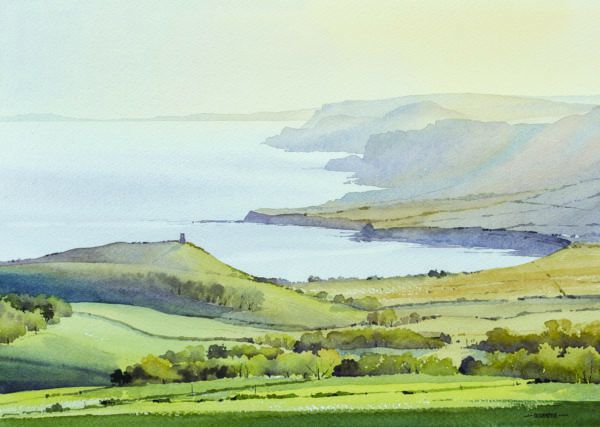One of the most important parts of landscape painting is ensuring that your scene looks vibrant and alive. To achieve this, it’s essential to bring in light and air as much as possible. The key to creating atmosphere is using light instead of paint, so you’ll need to make sure there are plenty of natural sources of light shining on your canvas from all angles. If you want to create a sense of depth in your landscape, you’ll also need to add layers of foliage and greenery so it feels like there’s more than just grass visible from a single spot. In this article, landscape painter Marvin Jemal will walk you through everything you need to know about lighting landscapes for lifelike effect and moody atmosphere.

Know Your Subject
The first step to lighting your landscape paintings is to fully understand your subject and what it exactly is you’re trying to depict. It may sound obvious, but knowing what your painting is about will help you determine where to place the light sources and how strong they need to be.
For example, if you’re painting a seascape, you want the light to come from the sky and reflect on the surface of the water. If you’re painting a winter scene, on the other hand, the light should come from the snow-covered landscape and only hit the water in a weak way. When you know your subject, you can also choose a type of painting that’s more suitable for your location and set up. For example, a summer scene will work best in a very sunny location, while a winter scene will look best in a more shady spot.
Tell a Story with Atmosphere
When you paint a landscape, it’s your job to create a scene that’s completely divorced from reality. While it’s important to paint realistic settings and subjects, you don’t have to adhere to the exact colors, shapes, and styles of real-world locations. Instead, use paintings and the techniques to create a story in your own fantasy world. To create atmosphere, it’s essential to create a sense of place. You do this by using light sources, shadows, and colors to create both an indoor and outdoor environment that looks like a place you’ve been before. As Marvin Jemal further explains, you can add a sense of depth by painting layers of greenery and creating a distance between your subject and the background. The sky can also be painted in a way that creates a sense of light or dark clouds moving across it.
Use the Light
When you’re creating a scene outdoors, the most obvious sources of light are the sun and moon. You can also use these natural lights to create a sense of atmosphere and illuminate your canvas with their light. To light up your landscape, Marvin Jemal recommends using a lamp or two to cast a bright light on your canvas from different angles. Using lamps, especially soft ones, creates the perfect balance between light and shade. You can also use spotlights, lamps, or lanterns indoors to provide a bright source of light from a single spot. If you want to create a moody atmosphere and not just a bright source of light, you can add candles or other decorative electric lights. If you want to add even more atmosphere, you can also add a fire pit or a small pot plant to create a strong scent in the air.
Understand Your Technique
When you’re painting outdoors, especially in very hot or cold climates, it’s essential to understand your technique. Using acrylic paints outdoors in the summer can quickly dry out, causing you to ruin every canvas you paint on. In addition, acrylic paints can crack, chip, or fade if they’re exposed to the elements. It’s essential to keep your canvases indoors and use an indoor drying technique to prevent damage and keep your paintings looking their best. In the winter, you’ll also want to try to keep your canvas protected from the elements by covering it with a blanket or tarp.
Bring It Together
When you’re creating a landscape painting, the sky, ground, and vegetation are the three most important elements. If you don’t get these right, your painting won’t be as successful. Since you’re painting outdoors, the sky is the most important part of the equation because it’s the light source that you’ll be able to control the most. You can create a variety of moods and atmospheres by changing the way the light hits the ground and adding layers of greenery. The vegetation in your painting can be added in a few distinct ways, including painting in greenery on a canvas, using dried leaves, or creating a pot plant indoors with soil. You can also add to the atmosphere of a landscape painting by adding a fog or mist effect, adds New York-based artist Marvin Jemal. Misting water can make your painting feel like it’s in a woodland or marsh setting, while misting a pot plant can create a strong scent.
Summary
Lighting your outdoor landscape paintings can help take your painting to the next level by creating a vibrant, lively scene. It’s important to know your subject, but it’s also essential to create a story in your own fantasy world. Use natural light sources to create an indoor/outdoor environment, create layers of vegetation and sky, and use a fog or mist effect to add atmosphere to your paintings.